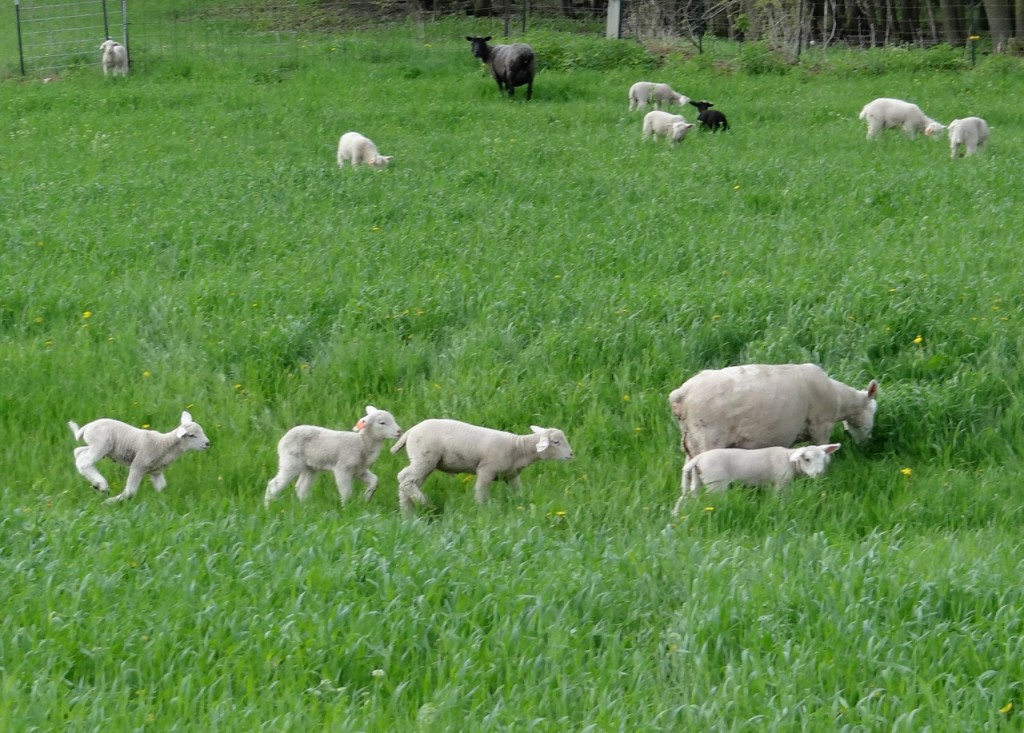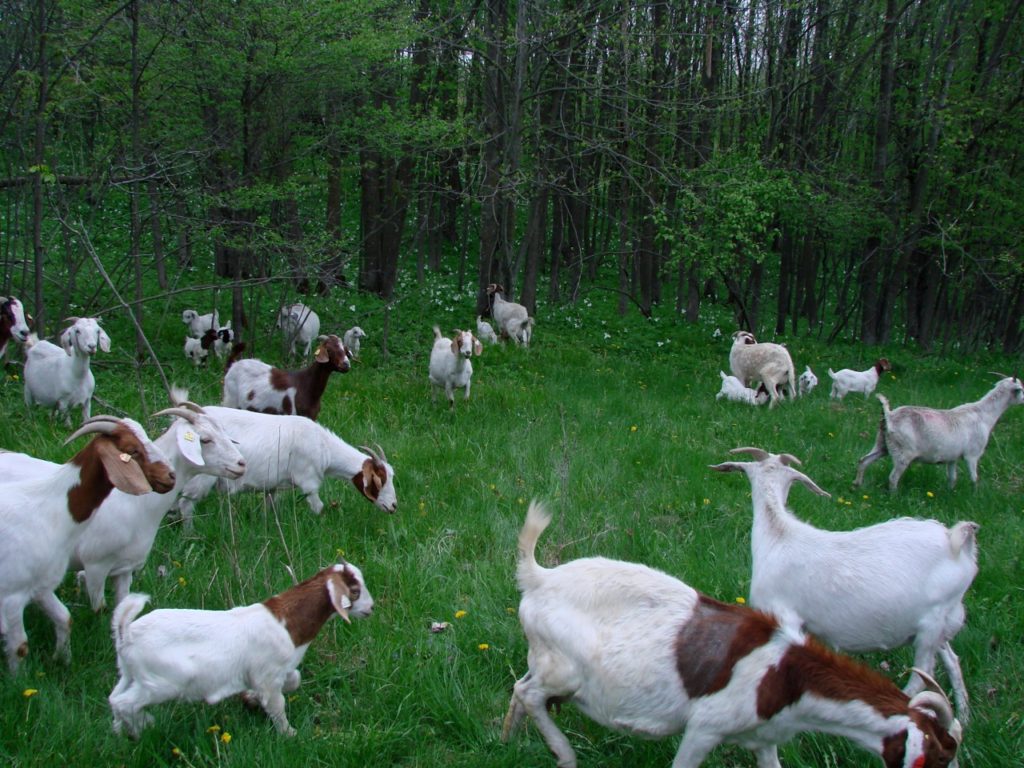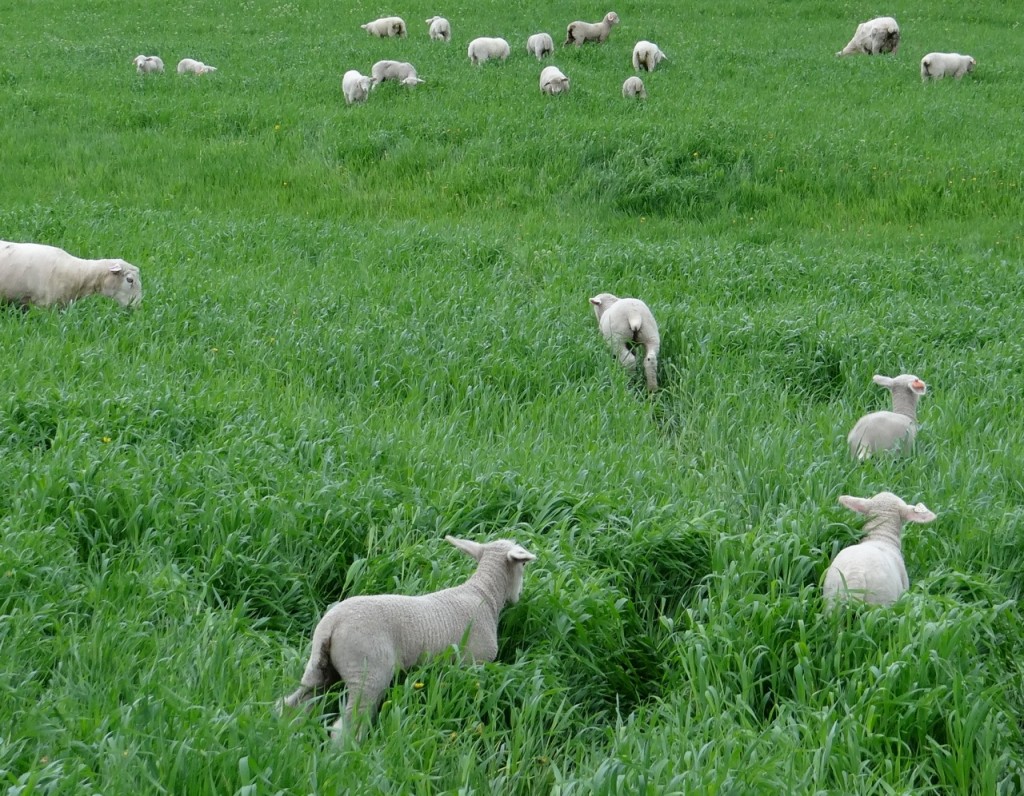Customer Question: What Do Your Sheep Eat?
What our sheep and goats eat depend upon the season. In the spring the new grass growth is eagerly anticipated after their winter’s diet of harvested grass and alfalfa hay. If the opportunity presents itself a eager sheep may test the gate latches and often manage to release a chain, open the gate and bellow to the group to come along down the road to a green pasture. It is hard to hold them back until the spring grass is ready.
There are few things more beautiful or fun to watch than ewes with lambs entering a fresh grass pasture for the first time in the season. There is much bleating and calling to each other and to their individual to keep up, don’t dawdle, get through that gate, where is my second lamb.… Sheep vocalize steadily when being moved to new areas and even more so when they have lambs at their side. Sheep in a separate area, watching another group enter a fresh field also express their opinions and concerns about being left far behind!

Sheep and goats can smell young grass growing under a snow cover and will dig through 6-8 inches to reach the new shoots. This is usually not desirable since grazing the grass at this stage will damage the root base and stunt growth.The actual turnout time is dependent upon weather conditions. Spring flooded or muddy fields are not appropriate for grazing. In Wisconsin the turnout time may vary from late March (such as last year, 2012) to late May (this year, 2013). Until then sheep, goats and their shepherds have to patiently wait for the grass to grow.

When the grass is ready to be grazed it is still important to introduce the sheep to pasture carefully. As it takes a few days for any major diet change, such as going onto fresh grass, for their rumen (first stomach) to adjust. Fresh grass also has a high water content so roughage is provided to aid their transition. It is prudent to wait until the dew is off the morning grass and they have had an opportunity to fill their rumen with dry hay before turning them out. Otherwise, they may gouge on the sweet new grasses and have digestion problems later in the day. Sheep will grind their teeth when they are in distress due to rich diet changes. Keeping the rumen digesting properly is very important especially during lactation and a major management decision in the spring.

During the summer and fall their diet changes due to maturing plants becoming more fibrous and frequent drought conditions. As their diet changes with the seasons we will update.
Note: Sheep, goats and cattle are called ruminants because of the function of their rumen. The rumen is the first of the 4 part stomach and is where forage collects immediately after being swallowed and where it is softened by bacteria and fermentation. It is later chewed more thoroughly and referred to as their cud. In this way they are able to digest tough plant material such as cellulose (the main component of plant walls) that simple stomachs, like our own, are not capable of efficiently digesting.
